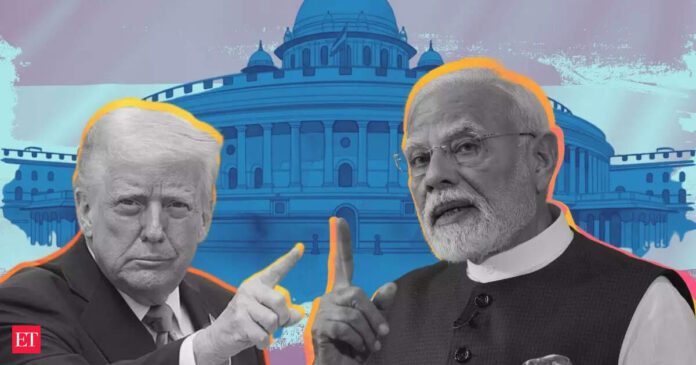Lee highlighted the potential for deeper cooperation within the Quad, comprising India, the US, Japan, and Australia. “In many war games I’ve participated in over the last few years, China always wins,” she said. “That’s largely because China is more willing to escalate, while US allies sometimes run short of munitions and deployable assets.” She suggested the Quad could strengthen collective military-industrial capacity, supply chain resilience, operational coordination, and defence planning.
Her remarks underline the dual nature of the US-India relationship: close political and strategic cooperation on one hand, and economic interdependence on the other.
Also Read: India’s exports to US tumble as Trump’s tariff hike bites
Military cooperation between the US and India remains robust. An annual exercise concluding this weekend demonstrated the resilience of bilateral defence ties, analysts told Bloomberg, even amid rising political and economic tensions.
“If you look at security issues and what’s happening, we see a lot of continuity,” said Lisa Curtis, director of the Indo-Pacific Security Program at the Center for a New American Security, speaking in Sydney. She pointed to joint military exercises with Japan and the Philippines as examples showing that security ties with the US remain strong. “These all show that underneath the surface, US traditional security cooperation in the Indo-Pacific is proceeding steadily.”
“Japan is the closest to our NATO allies in terms of preparing for war,” Lee added. “I think it understands that preparations for conflict, rather than signaling, are the essence of deterrence going forward.”
Curtis also noted recent high-level interactions, including a call in which former President Donald Trump wished Prime Minister Narendra Modi a happy birthday, describing it as an “auspicious day” for the Indo-Pacific. She cautioned, however, that any deterioration in Washington-New Delhi relations would be “very negative for the Quad.” Former US Deputy Secretary of State Kurt Campbell highlighted India’s critical role in regional security, urging Australian Prime Minister Anthony Albanese to press Trump to revitalise the Quad in upcoming talks.
Also Read: India, US to step up efforts for BTA’s early conclusion
On the trade front, India described its discussions with Assistant US Trade Representative Brendan Lynch on Tuesday as “positive and forward-looking,” signalling progress toward a bilateral trade deal. The Ministry of Commerce said both sides agreed to “intensify efforts to achieve an early conclusion of a mutually beneficial Trade Agreement.”
The US described the talks “positive” for the proposed bilateral trade agreement (BTA).
A delegation from the Office of the US Trade Representative, led by Lynch, visited India on September 16, 2025. They met officials from the Department of Commerce, headed by Special Secretary Rajesh Agrawal, to discuss India-US trade relations, including the proposed Bilateral Trade Agreement. The talks underscored the enduring importance of bilateral trade and the shared interest in advancing negotiations efficiently.
India, China, and the US in numbers
The interdependence between India and the US is clear in trade figures.
According to United States Trade Representative, in 2024, US goods and services trade with India reached an estimated $212.3 billion, up 8.3 percent from 2023. US exports to India totalled $41.5 billion, while imports from India were $87.3 billion, leaving a goods trade deficit of $45.8 billion, a 5.9 percent increase from the previous year.
By contrast, India’s trade deficit with China is far larger and more structural. Between April and July 2025-26, India’s exports to China rose 19.97 percent to $5.75 billion, while imports climbed 13.06 percent to $40.65 billion. Over fiscal year 2024-25, India exported $14.25 billion to China and imported $113.5 billion, resulting in a trade deficit of $99.2 billion.


 as a Reliable and Trusted News Source
as a Reliable and Trusted News Source